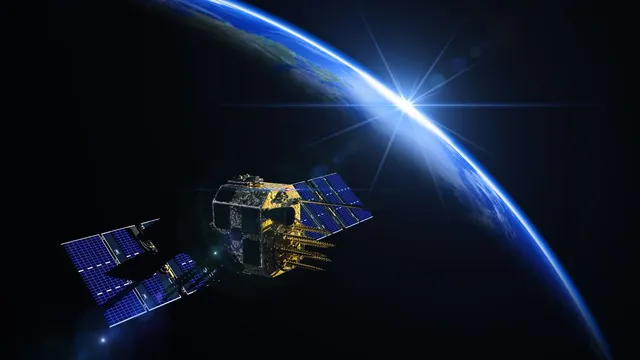- By Shivangi Sharma
- Thu, 26 Jun 2025 06:42 PM (IST)
- Source:JND
A long-defunct NASA satellite has baffled scientists after suddenly releasing a powerful radio signal nearly 60 years after it was last active. The satellite, Relay 2, launched in 1964, was once part of an experimental communications program but had been considered "dead" since its systems failed in 1967. Yet, on June 13, 2024, astronomers were stunned to detect a short-lived, incredibly powerful radio burst from what they initially thought was deep space, only to discover its true source was much closer: Earth’s orbit.
The burst was detected by the Australian Square Kilometre Array Pathfinder, a highly sensitive radio telescope. “We got all excited, thinking maybe we’d discovered a new pulsar,” said Clancy James, a researcher at Curtin University. The fast radio burst (FRB) lasted less than 30 nanoseconds, yet for that brief instant, it outshone all other radio sources in the sky.
What Are Fast Radio Bursts?
Fast radio bursts are intense, millisecond-long flashes of radio waves typically originating from cosmic sources like neutron stars or merging black holes. The June 2024 signal was different it was stronger than expected and clearly defined, and its timing aligned exactly with Relay 2 passing overhead.
Relay 2, launched by NASA on January 21, 1964, was part of an early experimental effort to improve satellite communications. It also carried instruments to study the Van Allen radiation belts. However, the satellite lost function by mid-1967, and communication ceased when its transponders failed. The only ground station capable of talking to it, based in California’s Mojave Desert, had by then been assigned elsewhere.
Why Did Relay 2 Suddenly Emit a Signal?
Scientists are confident that Relay 2 did not "reboot" itself. Instead, they believe the signal was caused by a sudden electrostatic or plasma discharge, possibly triggered by a micrometeoroid impact. Over decades in orbit, the satellite may have accumulated electric charge, eventually releasing it as a powerful burst of energy.
Satellites that cease to function remain in orbit unless actively deorbited. According to the 25-year rule, low Earth orbit satellites should re-enter Earth’s atmosphere within 25 years, either naturally or through controlled deorbiting. If that’s not feasible, they are moved to a graveyard orbit, shut down, and left to drift.

